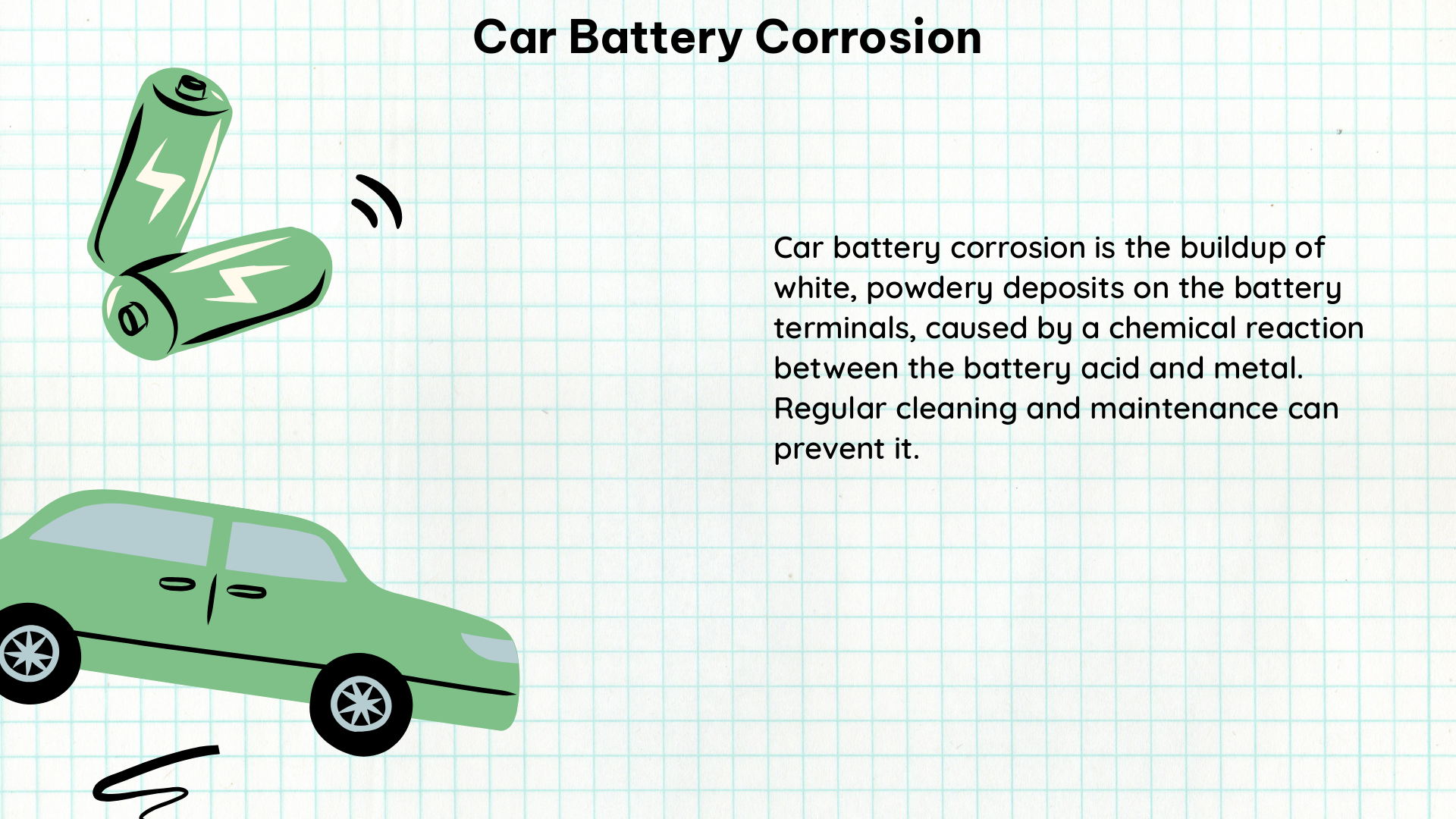Car battery corrosion is a common issue that can lead to significant problems, such as preventing the car from starting or damaging various components like the vehicle chassis, electrical wiring, and air conditioner lines. The corrosion is primarily triggered by the release of hydrogen gas from the sulfuric acid inside the battery, which mixes with other elements in the atmosphere to create a corrosive environment. This process is accelerated by factors like moisture and salts.
Understanding the Causes of Car Battery Corrosion
Car battery corrosion is a complex process that involves several chemical reactions and environmental factors. The primary cause of corrosion is the interaction between the battery’s lead-acid components and the surrounding environment.
Hydrogen Gas Production
The sulfuric acid inside the battery reacts with the lead plates, producing hydrogen gas. This hydrogen gas can then mix with other elements in the atmosphere, such as oxygen and water vapor, to form a corrosive environment.
Galvanic Corrosion
The battery terminals and connectors are made of different metals, such as copper and lead. This creates a galvanic cell, where one metal (the anode) corrodes while the other (the cathode) is protected. This process, known as galvanic corrosion, can accelerate the formation of corrosion on the battery terminals.
Environmental Factors
Moisture and salts in the environment can also contribute to the corrosion process. The presence of water can dissolve the corrosion products, while salts can increase the conductivity of the solution, further accelerating the corrosion.
Identifying the Signs of Car Battery Corrosion

Car battery corrosion can manifest in various ways, and it’s important to be able to recognize the signs early on to prevent further damage.
Visual Inspection
The most obvious signs of car battery corrosion are the white, green, or bluish substances that appear on the battery posts, terminals, or cables. These substances are typically lead sulfate, anhydrous copper sulfate, or hydrated copper sulfate, respectively.
Electrical Resistance
As the corrosion builds up, it acts as a poor conductor of electricity, increasing the resistance within the electrical circuit. This can result in a decrease in the battery’s ability to start the car or power the vehicle’s electrical components.
Battery Performance
Severe corrosion can also affect the battery’s overall performance, leading to issues such as a shorter lifespan, reduced cranking power, and difficulty starting the vehicle.
Preventing Car Battery Corrosion
Preventing car battery corrosion is crucial to maintaining the health and longevity of your vehicle’s electrical system. Here are some effective strategies to prevent corrosion:
Regular Cleaning and Maintenance
Regularly cleaning the battery terminals and cables can help remove any existing corrosion and slow down the formation of new corrosion. This should be done every 6 months or as needed.
Proper Battery Placement
Ensuring that the battery is properly secured and not exposed to excessive moisture or salt can help reduce the risk of corrosion.
Use of Corrosion-Resistant Accessories
Investing in corrosion-resistant battery terminals, cables, and other accessories can help mitigate the effects of galvanic corrosion.
Battery Maintenance Additives
Some battery maintenance additives, such as anti-corrosion sprays or battery terminal protectors, can help create a barrier against corrosion.
Cleaning and Maintaining Car Battery Corrosion
If your car’s battery has already developed corrosion, it’s important to address the issue promptly to prevent further damage. Here’s a step-by-step guide to cleaning and maintaining car battery corrosion:
- Wear appropriate personal protective equipment (PPE), such as safety glasses and mechanic gloves.
- Mix a baking soda and water solution (1 tablespoon of baking soda per 1 cup of water) to help neutralize the corrosive substances.
- Use a wire brush or a battery terminal cleaner to gently scrub the battery posts, terminals, and cables, removing any visible corrosion.
- Rinse the area with the baking soda solution to flush away any remaining corrosion.
- Dry the area thoroughly with a clean, dry cloth.
- Apply a thin layer of high-pressure grease or wheel bearing grease to the battery terminals to help slow down the corrosion process.
- Reconnect the battery cables, making sure to attach the positive (+) cable first, followed by the negative (-) cable.
- Cover the battery terminals with a protective cover or battery terminal protector to prevent future corrosion.
- Repeat this cleaning and maintenance process every 6 months or as needed to keep your car’s battery in optimal condition.
Conclusion
Car battery corrosion is a common issue that can have serious consequences for your vehicle’s electrical system and overall performance. By understanding the causes, identifying the signs, and implementing effective prevention and cleaning strategies, you can prolong the life of your car’s battery and avoid costly repairs. Remember to always prioritize safety when working with car batteries and consult a professional if you’re unsure about any aspect of the process.
References:
- Understanding and Addressing Car Battery Corrosion: A Guide to Prevention and Cleaning
- What causes battery terminal corrosion?
- What’s this blue dust collecting on positive node?

The lambdageeks.com Core SME Team is a group of experienced subject matter experts from diverse scientific and technical fields including Physics, Chemistry, Technology,Electronics & Electrical Engineering, Automotive, Mechanical Engineering. Our team collaborates to create high-quality, well-researched articles on a wide range of science and technology topics for the lambdageeks.com website.
All Our Senior SME are having more than 7 Years of experience in the respective fields . They are either Working Industry Professionals or assocaited With different Universities. Refer Our Authors Page to get to know About our Core SMEs.